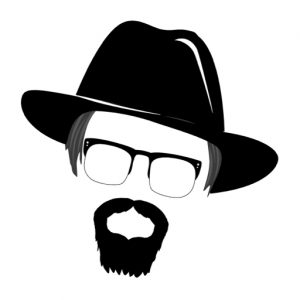
I’m often asked about how I learned to describe audio gear in a way that gives the reader some idea about what it sounds like. This question and a couple of new reviewers on our team got me thinking about the things that prepared me to be a reviewer. In this introduction, I will try to answer that question. Future posts in this series will look at how I review, listen, and write.
First, I was a prolific reader. Before I lost my vision, I read two books a week for over 30 years. Now I listen to two or three a week, except for Brandon Sanderson and his nearly 50-hour books.
Early Influences
In college, I read everything about audio and music that I could get my hands on. Back in the 70s, I spent way too many hours in the magazine stacks at the Baylor University library reading the old audio rags from the 50s and 60s. My favorites were Audio and Gramaphone.
I’m more of a storyteller than a writer. Even though for over 30 years I preached and taught classes at least three times a week, but I never wrote a manuscript. Instead, I spoke from extended outlines.
So, when I began to write audio reviews, I just wrote like I was telling the reader about the gear. Thank goodness when Becky and I started The Audio Beatnik, I finally had a real editor. She majored in journalism at Baylor and earned a master’s degree in technical writing. In fact, it was her career that moved us to California. She got a job offer to manage technical writing and web development for an international technology company in San Francisco. With her background, she really makes everything happen for our website.
Audio Magazines
I should probably throw in here that during the 80s and 90s we lived in very small towns in Alabama and Georgia. Atlanta was a couple of hours away, and Birmingham was a little further. There were no quick trips to an audio store. In those days, we were also raising our two sons, and had very little extra money to invest in audio.
From the early issues of Stereophile when it was a little journal with no adverts and the very first issue of The Absolute Sound, I read them from cover to cover several times and kept them. I sold them in the 90s. Harry Pearson and Dr. John Coolidge in the early years of The Absolute Sound were huge influences on my vocabulary for describing how recorded music sounds.
In those early issues, HP and JWC often commented on each other’s reviews and often disagreed. Even though HP was firm that there was an “absolute sound”, he thought live music was what we should measure everything against. JWC often disagreed.
My Approach
I think it is important to approach reviewing from the idea that everyone is not looking for the same sound the reviewer favors. This is why I feel like my job is not just to tell you if I like a piece of gear. Instead, I try my best to describe how it sounded and how it influenced my system.
I often went back and reread the old copies of Stereophile and The Absolute Sound. I cannot overstate how much all the time I spent in these two early journals influenced how I write today.
Sound Practices, Listener and More
In 1992, Joe Roberts’ Sound Practices magazine came along. At the time I had a pair of Celestion 6 speakers driven by a pair of Beard Audio P35s amplifiers. The P35s were pure Class A push-pull tube amps. My source was a Linn turntable, tonearm, and cartridge. My preamp was an Audio Research SP-8.
I had been blown away by this system’s soundstaging abilities. You could hear instruments way outside of the speakers and way behind them. This system was where I came to understand the concept of instruments floating on a black velvet background. I came to find this distracted from the music itself.
After about a year or more, I began to find this system boring. I called Joe Roberts up, and after a few long conversations, I sold the speakers and amps. I bought a pair of Klipsch Forte speakers and a little Cary designed 300B SET amp. This system lacked some audiophile characteristics, but it was never boring.
In 1994, along came Listener, my favorite audio rag of all time. Art Dudley taught me much through Listener. The recent loss of Art hit me hard personally, and it was a huge loss to the audiophile community. My tribute to Art here expresses his influence on me as an audiophile and reviewer.
Neither Joe nor Art added much to my audiophile vocabulary. However, they both helped me discover how to get what I had been missing from my system musically. They also challenged my concept of what makes for a great stereo.
Lastly, let me mention Jeff Day. I began reading Jeff on 6Moons Audio around 1992. From Jeff’s writing, I picked up words that helped me describe some of what Joe Roberts and Art Dudley had shown me I wanted from my stereo. If you don’t read Jeff, check him out here.
A Note from The Beatnik
This post is the introduction to a new series. I’m not sure how many posts I’ll write in this series. It somewhat depends on how many people read them. My next piece, which will probably be out next week, will be called “The Anatomy of a Review.” Let me know your thoughts!


Thank you for sharing your insights and referring to other reviewers as well. Very professional and pleasant, as always.
Thank you!
Hey, Carlos, Jack says thank you for your comments. As you can see from the article, he learned from a couple of the best ever in audio, Jim Smith and Art Dudley.
Thank you for sharing your experiences here, Jack. I especially liked that Part 2 came out on my birthday. Thanks for the present! I too have learned much from reading Stereophile, TAS and Listener (ultimately my personal favorite) and I believe I have been able to apply lessons in building And listening to my ultimate system. I know I have read a good review when I can liken it to Aaron Copeland’s, “What To Listen For In Music” and now your work here, along with the above mentioned aa well as that of the (dare I say) fictitious Sam Tellig have helped me to do so. As a newbie to The Audio Beatnik, I look forward to more discussions that help me To better hear what What I’m listening to. Thanks!
Oops! Sorry for the typos.